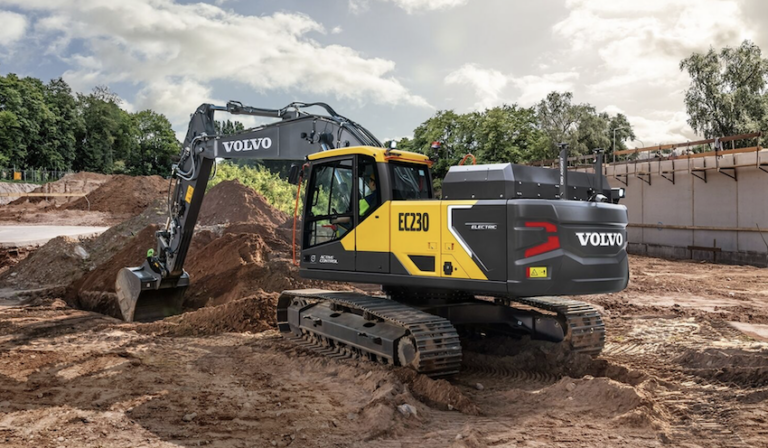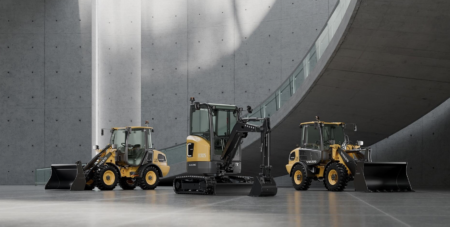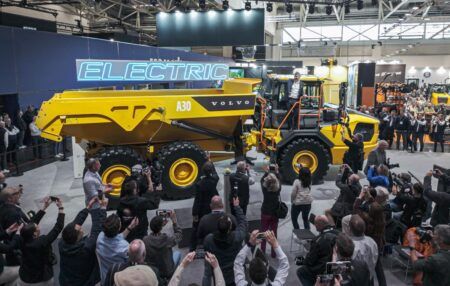Volvo CE’s EC230, thought to be the largest market-ready battery electric excavator in the world, is now available to buy for selected customers in Europe, having already proved successful in a variety of pilot applications in both Europe and Asia.
The 23-ton EC230 electric excavator was first announced at Bauma China 2020, but with only very limited technical specifications. Now full details are available. It delivers the same performance as its conventional diesel counterpart, but with the added benefit of zero emissions, low noise, low vibrations, better controllability and lower total cost of ownership. Operators report that it has not only been achieving a similar digging force as its diesel equivalent, the Volvo EC200E, but doing so with an even faster cycle time and much less noise.
For a full case study of the EC230 don’t miss the June 2023 edition of iVT magazine.
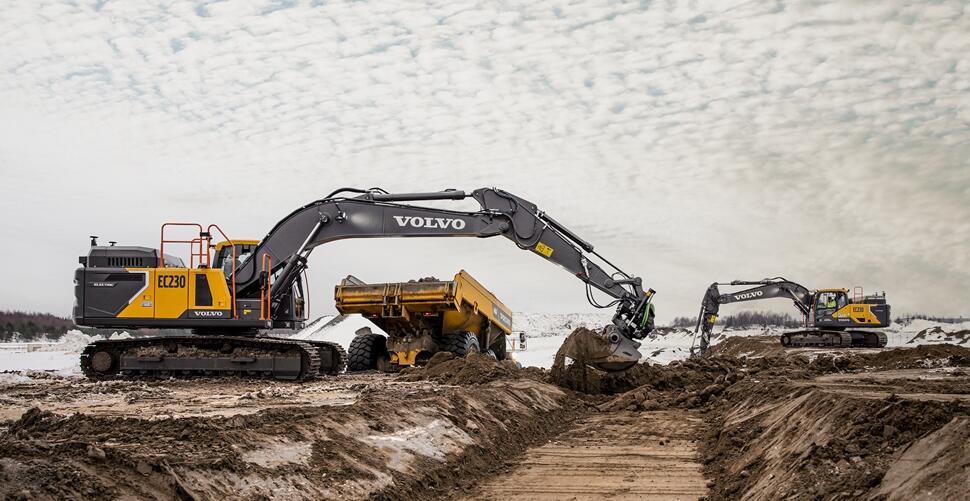
Reducing harmful emissions and disruptive noise is not only beneficial for people working on site and for the community in which it is operating, but it could also help meet CO2 reduction targets. In fact, the EC230 Electric is so efficient that – even with the energy needed to produce the batteries – total emissions are still lower than its diesel variant.
These benefits have been evident during the machine’s successful operation on major customer sites such as the Slakthusområdet urban development in Sweden, the country’s largest fossil free worksite, and the Green Construction Site of the Future project in Denmark, where it was put to work on construction of an office building and urban public spaces.
Richard Sjöblom, excavator operator for Skanska on the Slakthusområdet project, has been particularly positive about the ease of charging and the performance of the machine after testing it across different applications. He says: “If I had the choice of an electric or diesel machine in this size class, I would choose electric as there are so many advantages over a diesel machine. When the machine was delivered to site there were many sceptics who thought the machine didn’t have the capacity to last the whole day, but they have all been proved wrong!”
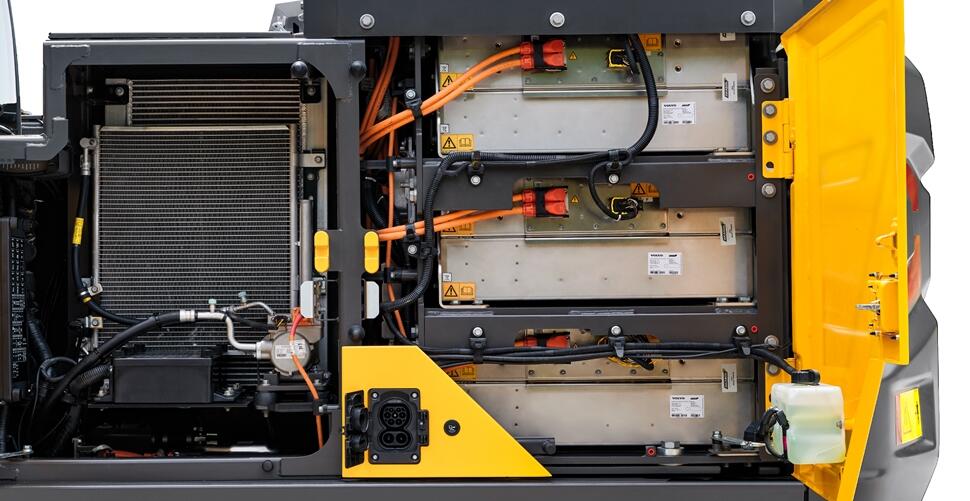
The machine is powered by lithium-ion batteries and has been designed to carry out a full eight hours of work, with a speedy high-power lunch-hour charge. As a general purpose machine, it is designed for a variety of tasks including extraction, earthmoving and grading for site preparation in the building segment, as well as waste and scrap handling in the recycling and waste segment.
It is the first of Volvo CE’s excavators in the mid-size range to be made electric and has recently been joined by the 20-ton L120H Electric Conversion wheel loader. Both machines have arrived after the successful commercialization of the manufacturer’s industry-leading electric compact machines the ECR25 Electric excavator and L25 Electric wheel loader. Since then, the ECR18 Electric and EC18 Electric compact excavators and the L20 Electric wheel loader have also been introduced to the market.
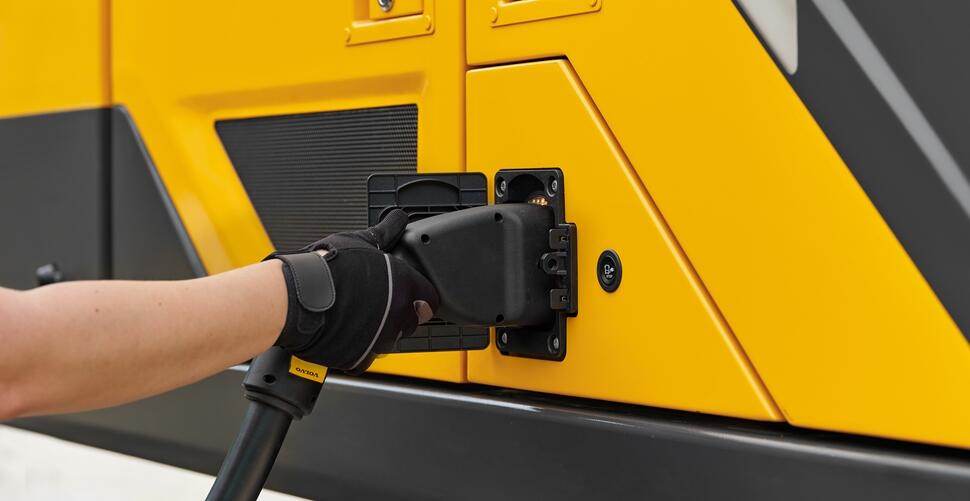
The EC230 Electric is equipped with a CCS2 connector which is a standard connector available in most European countries, allowing customers to power up and put to work this machine almost anywhere using all available chargers on the market.
It also comes with a charging cable providing a power level of 22 kW, therefore enabling battery charging via a CEE socket – as well as the option of a mobile power bank, built specifically to meet the demands of the EC230 Electric. With this range of charging solutions, Volvo CE is providing the flexibility customers need to get the job done – not only with the machine itself but with the infrastructure needed to keep the machine up and running with minimal effort.
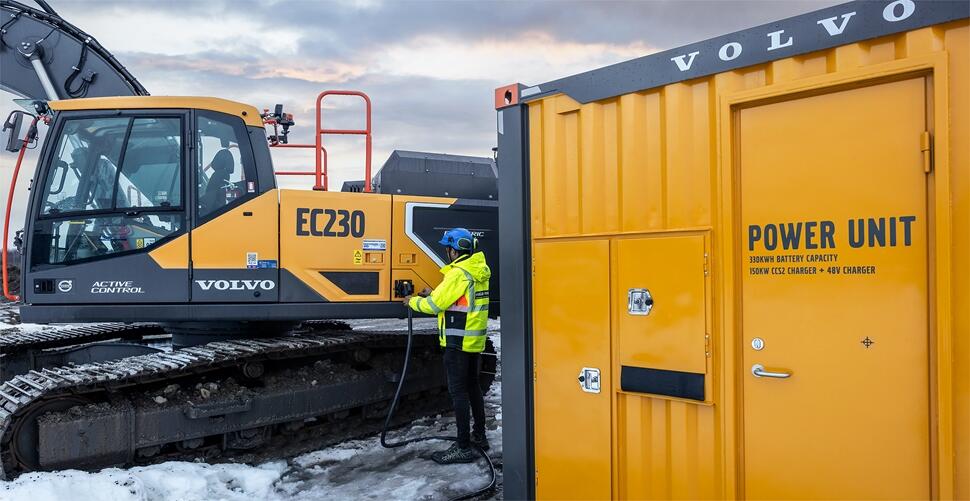
Insights from the EC230 Electric’s use will be instrumental in helping Volvo CE build the world we want to live in through its electric solutions. It can provide data on factors such as productivity, cost and scalability which will help to develop even more models in the electric range – and also benefit the company’s partners and customers as they too fulfil their ongoing ambitions to reduce climate impact.
The development of both the EC230 Electric and the L120H Electric Conversion form part of a unique partnership approach that allows for a speedy implementation to the market. In the case of the EC230 Electric, we work together with customers to fine-tune the development of our own advanced technology and, in the case of the L120H Electric Conversion, we partner with like-minded experts such as CE Engineering Solutions to accelerate the availability of commercialized electric solutions across all segments and applications. Both approaches are needed in parallel as we work towards our target to achieve net zero greenhouse gas emissions by 2040 – with significant reductions as early as 2030 – as part of the Science Based Targets initiative.


